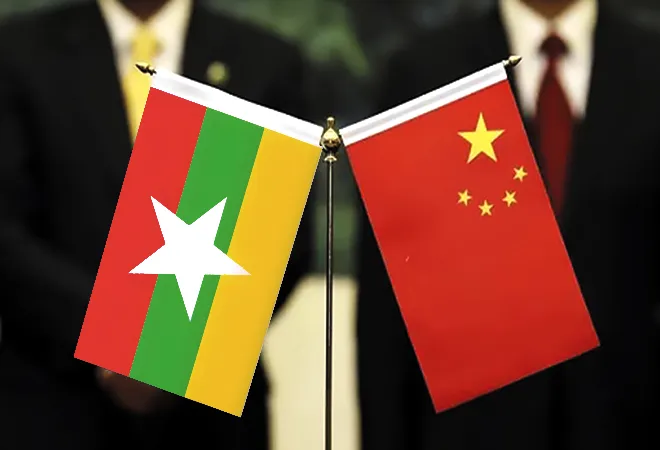
There is evidence that Signals Intelligence (SIGINT) capabilities are being strengthened on Myanmar’s Coco Islands, which is 55 kilometres north of India’s tri-service base located at the Andaman and Nicobar (A&C) Islands. The Tatmadaw has vehemently denied that it is assisting the Chinese, but the latest satellite imagery released by Maxar shows that the military regime is expanding the size of the Coco Islands base by extending the length of the runway and establishing a stronger SIGINT architecture. Officially, a spokesperson for the military junta’s ruling State Administration Council has dismissed Indian concerns that Naypidaw is permitting the deployment of foreign troops, or more specifically Chinese forces, as part of its infrastructure expansion on the Coco Islands. Notwithstanding Naypidaw’s rejection of Indian concerns, it has no independent strategic or security rationale to boost the Coco Islands’ SIGINT installations, except to respond to the incentives given by Beijing. Most likely, the Coco Islands is a base controlled by Myanmar, but is being built with assistance from the People’s Republic of China (PRC) and to which Chinese military personnel, especially technical personnel from the People’s Liberation Army Strategic Support Force (PLASSF), have access.
As a result of Myanmar’s international isolation, China has a very robust bilateral relationship with Naypidaw with the latter offering shore and off-shore facilities for the establishment of Chinese Intelligence, Surveillance and Reconnaissance (ISR) facilities in exchange for weapons, arms production facilities, and new military equipment. Chinese SIGINT facilities have been set up on not just the Great Coco Island, but also the Ramree Island off the Coast of Arakan; the Hangyii Island facility at the entrance of the Irrawaddy Delta; at Monkey Point in Rangoon; and close to the Kra Peninsula on an island called Zadetkyi Kyun. The Chinese have had a substantial tri-service base in Irrawaddy since the early 1990s.
Prior to the latest developments, in 2017, the Coco Islands saw a significant amount of land reclamation leading to the expansion of the Coco Island airstrip from 1,300 metres to 2,300 metres, which is further extendable to 2,500 metres. The Southern tip of the Great Coco as shown in Figure-1 could very well undergo additional runway construction (Figure 2). These measures have now been supplemented with the construction of more facilities including aircraft hangars (Figure -3), a radar station (see Figure -4), an accommodation facility, and a potential staging ground and forward base for the Peoples Liberation Army (PLA) and its allied services. At a minimum, the improved SIGINT the Chinese are likely to acquire will help them track communications from the A&N, Indian military surveillance flights, and the Indian Navy’s (IN) deployment patterns.
Figure - 1
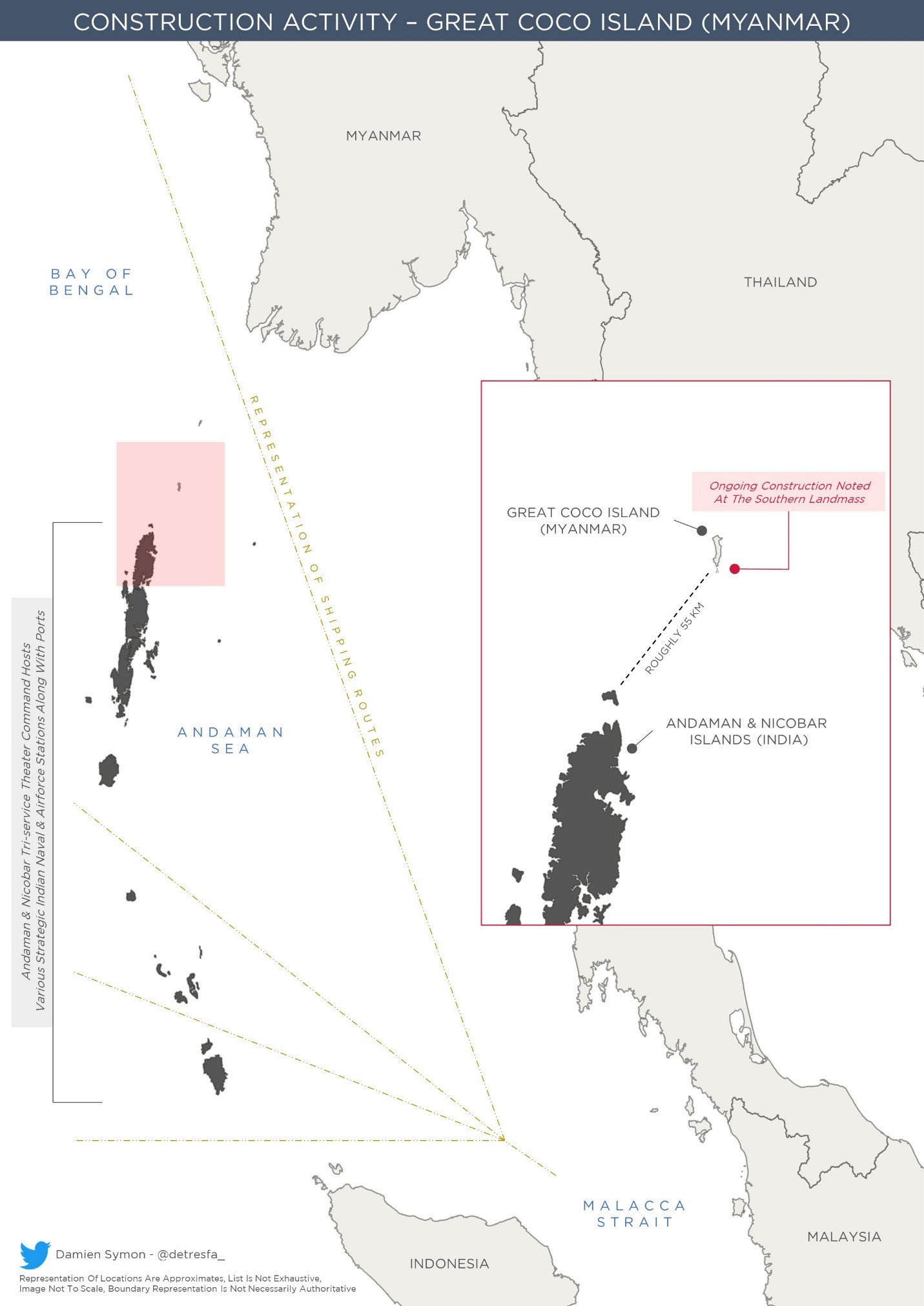 Source: Damien Symon
Source: Damien Symon
Figure - 2
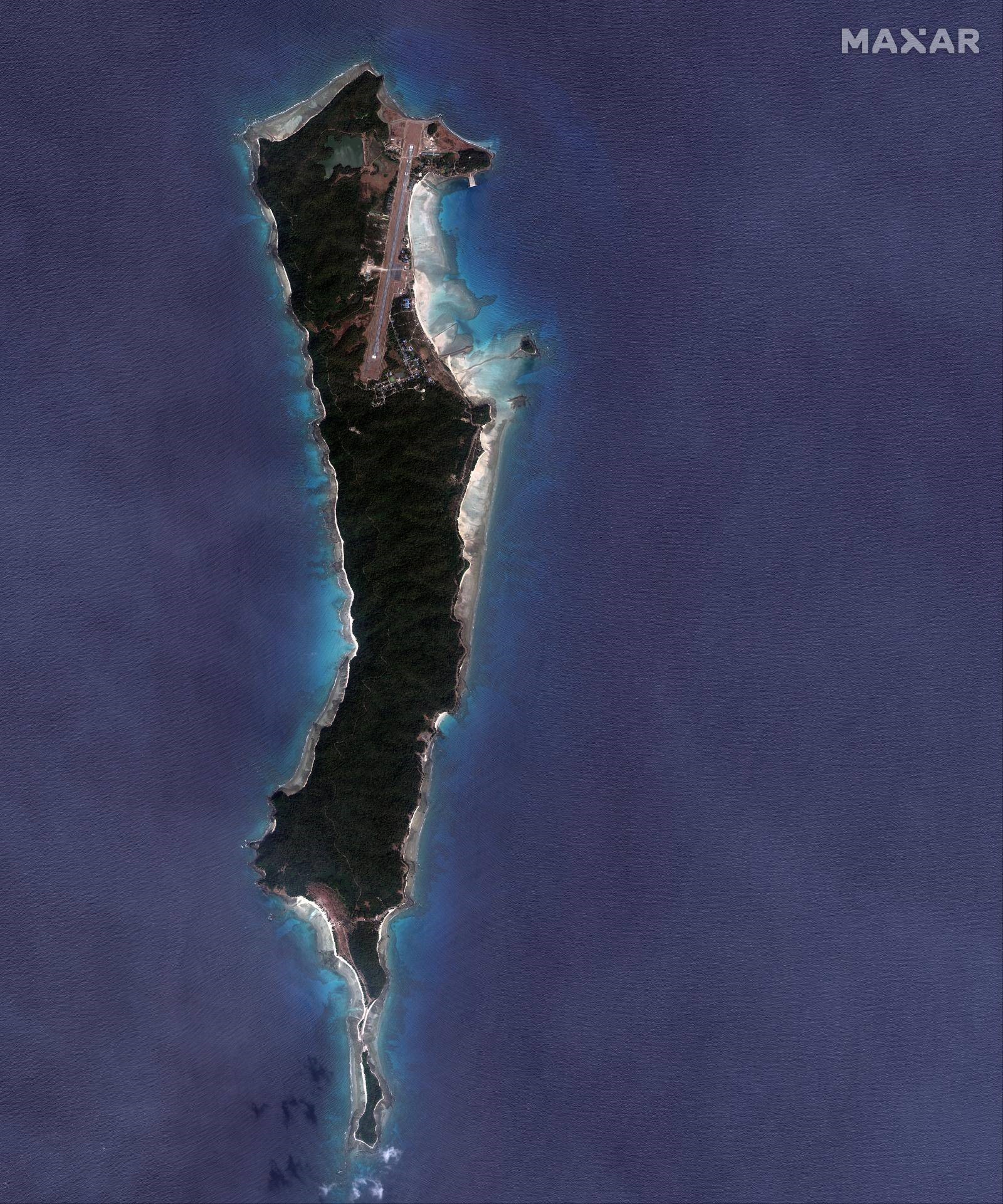 Source: Maxar Technologies
Source: Maxar Technologies
Figure -3
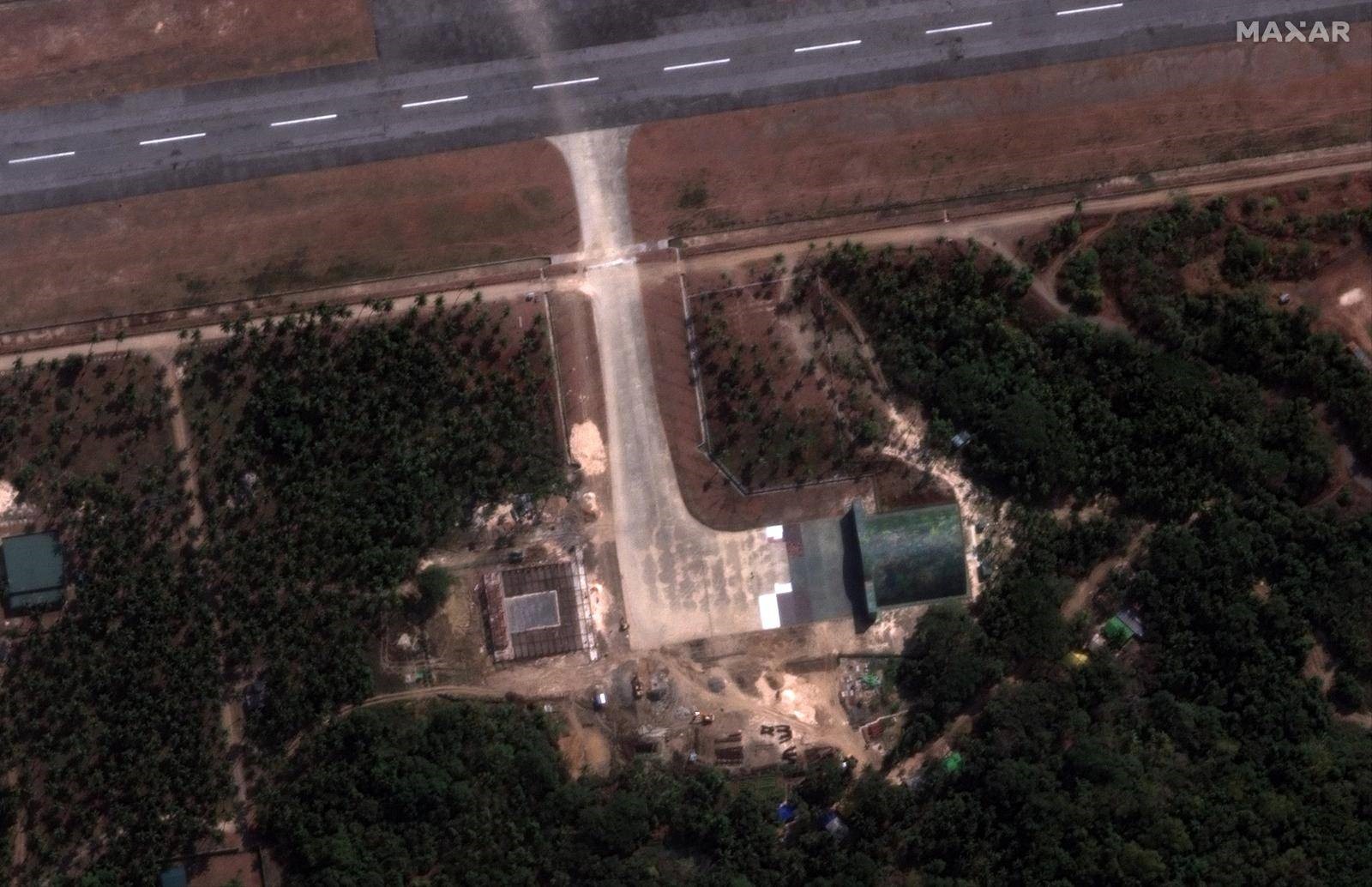
Figure – 4
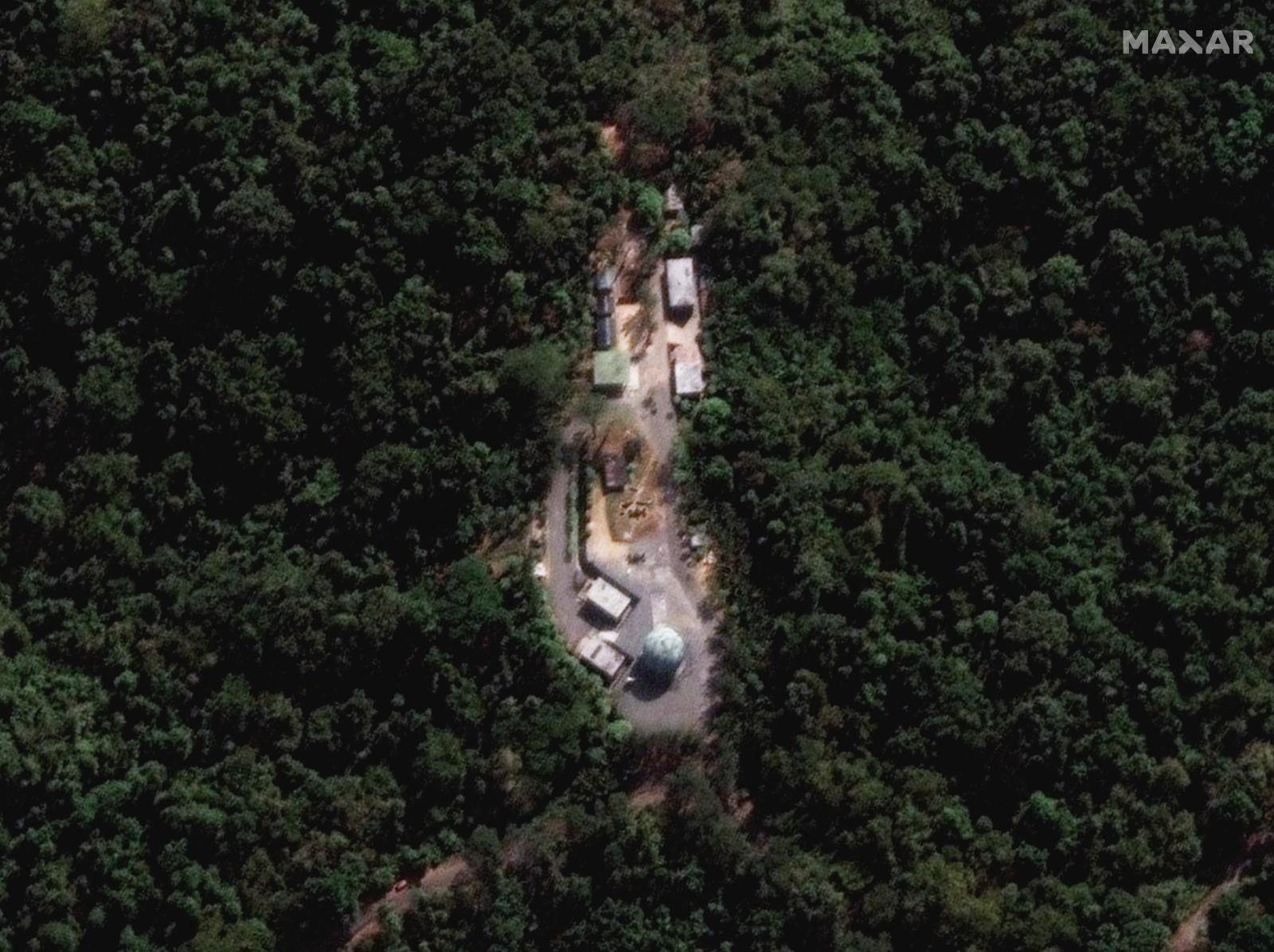 <Source: Maxar Technologies
<Source: Maxar Technologies
These new developments on the Coco Islands mark a shift in the PRC’s Indian Ocean strategy to a higher gear. Ascertaining Chinese motives would be a treacherous and difficult exercise, but, under Xi Jinping, the PRC has shown a proclivity for risk-taking coupled with a growing self-perception that its capabilities give the Chinese military opportunities to test and probe the redlines of adversaries. However, for Myanmar to become an instrument of potential Chinese military adventurism unambiguously demonstrates an ominous portent for New Delhi. China’s military build-up is also indicative of what might be in store for India at Hambantota in Sri Lanka, let alone Gwadar and Karachi in Pakistan. With Chinese troops already sitting on Indian claimed territory, the PRC’s latest build-up in collusion with Naypidaw, only strengthens the PRC’s minatory military presence in close proximity to a vital Indian military base on the A&C that hosts all the three Indian armed services under a single unified command. The construction of additional Chinese military infrastructure on the Coco Islands confirms Beijing’s military ambitions extend well beyond the Mainland’s claims over Taiwan, the South China Sea (SCS), the East China Sea (ECS) and the Western Pacific.
< style="color: #163449;">Implications for New Delhi and response by India
Irrespective of Chinese motives, it is now plainly evident that Beijing sees an opportunity in projecting its military capabilities and power by means of its infrastructure and intelligence collection build-up to limit India’s responses at sea in the event of a war between the two countries. New Delhi has to double down with more pressure against Naypidaw, impressing upon the military junta that Myanmar’s Coco Island territory, or for that matter any part of Myanmar’s territory, cannot be used to stage and execute military operations by the Chinese against Indian territory and against Indian off-shore and on-shore military base facilities. Even if the Coco Islands does not serve as a staging base for Chinese naval, air and amphibious missions vis-à-vis India, its role as a SIGINT collection facility that has undergone significant augmentation with Chinese assistance will present challenges for India’s tri-service command at the A&N. New Delhi will need to review the adequacy of existing capabilities that are in place at the A&N and institute measures that enhance its capabilities against the Chinese military. In addition, given that Beijing has been very effective at co-opting the Tatmadaw, India must work closely with some of its Asian partners such as Japan and member states of the Association of South East Asian Nations (ASEAN), who have ties with Myanmar, to warn the Tatmadaw to limit its ties to the Chinese military. In a nutshell, Naypidaw has to make it crystal clear to Beijing that the latter cannot see Myanmar as a proxy for the PRC’s military goals that are inimical to the security and interests of India and beyond.
The views expressed above belong to the author(s). ORF research and analyses now available on Telegram! Click here to access our curated content — blogs, longforms and interviews.








 PREV
PREV



